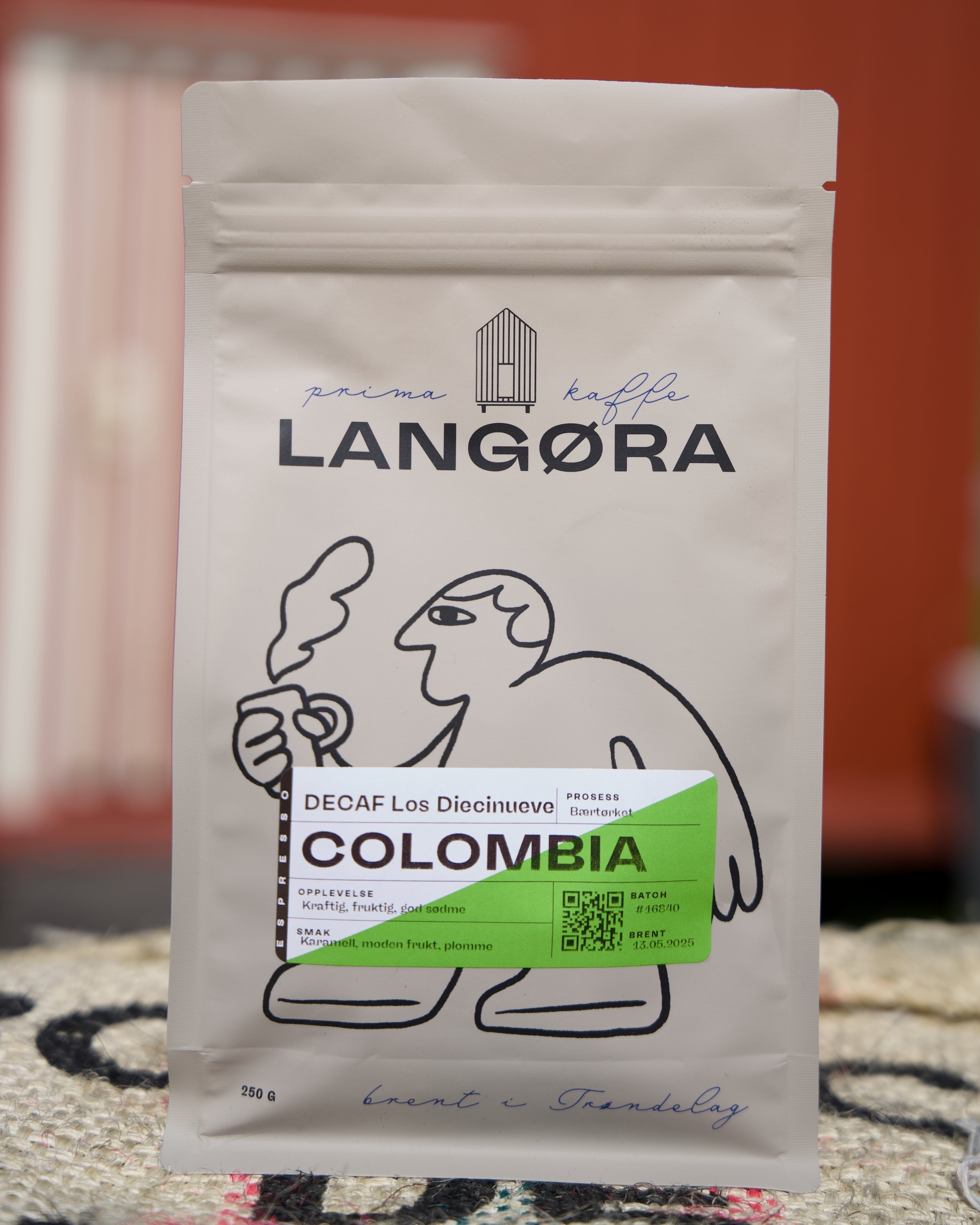Luke 20
Kaffi is a small coffee roaster in Os in Østerdalen, which was founded in 2020 by Kaffi was founded in the spring of 2020 by two-time Norwegian Barista Champion Adrian Berg, and Barista Trainer and Certified Judge Silje Arnevik. Our aim was to provide education and consultancy in the field of coffee, but we needed a roastery at the core to have access to raw materials. It ended with the roasting business growing bigger and bigger and suddenly we became a full-fledged coffee roaster that in 2023 came second in the Norwegian championship of Coffee Roasting. We have also recently opened a showroom in Trondheim at Erling Skakkes Gate 39, where we open the doors almost every Friday and invite people in to taste exciting and varied types of coffee.
Policarpo Yossa Rojos
COUNTRY: Colombia
FARM/COOP/STATION: Finca Buones Aires
VARIETAL: Geisha
PROCESSING: Washed
ALTITUDE: 1800 m.a.s.l.
OWNER: Policarpo Yossa Rojos
REGION: Huila
FLAVOUR NOTES: Super jammy and intense, like plum syrup. Intense dark florals, purple fruit, and candy-like. Layered notes of pineapple juice, papaya. Dense and chewy mouthfeel.
ABOUT THE FARMER AND COFFEE
Policarpo Yossa Rojos is the name of the farmer who owns Finca Buones Aires in Colombia. He specializes in varieties like gesha, pink bourbon, tabi and maragogype, coffee plants that usually recieve higher scores and sell at higher prices in the specialty market.
Policarpo has a good eye for quality and maintains good routines on his farm, ensuring that only the ripe cherries are picked and sent for processing. The cherries are floated to separate the high and low quality fruits, and then allowed to rest as whole cherries for 42 hours after picking. They are then depulped and wet fermented for 72 hours to remove mucilage. Once fermentation and washing is complete the coffee is dried on raised beds for 18-22 days.
This is a very delicate and old-school gesha, so we recommend enjoying it through the full spectrum of temperatures from hot all the way down to room temperature to explore all the nuances it offers.
COFFEE IN COLOMBIA
Although coffee production in Colombia did not become a large commercial industry until the 19th century, it is likely that coffee was introduced to Colombia about a century earlier by Jesuit priests.
Once commercial production started, it spread quickly. The first commercial coffee plantations were established in the northeast, near the border with Venezuela. Today, coffee is widespread and grown commercially in 20 of Colombia’s 32 Departments.
Historically, Colombia’s most renowned coffee-growing region has been the Eje Cafetero (Coffee Axis), also known as the ‘Coffee Triangle’. This region includes the departments of Caldas, Quindío and Risaralda. With a combined total area of 13,873 km² (5356 mi²), the region covers about 1.2% of the Colombian territory and composes 15% of the total land planted under coffee in the country. The region has also been declared a UNESCO World Heritage site.
While the Eje Cafetero is still a coffee-producing powerhouse, coffee production in Colombia now extends far beyond this zone. In recent years, the departments of Huila, Tolima, Cauca and Nariño have become sought after and well-known coffee-growing regions. Today, they are the largest producers of coffee in Colombia by volume.
Today, there are an estimated 540,000 coffee producers in the country; around 95% of these are smallholder farmers with landholdings that are under 5 hectares. These farmers collectively contribute around 16% of the country’s annual agricultural GDP.















